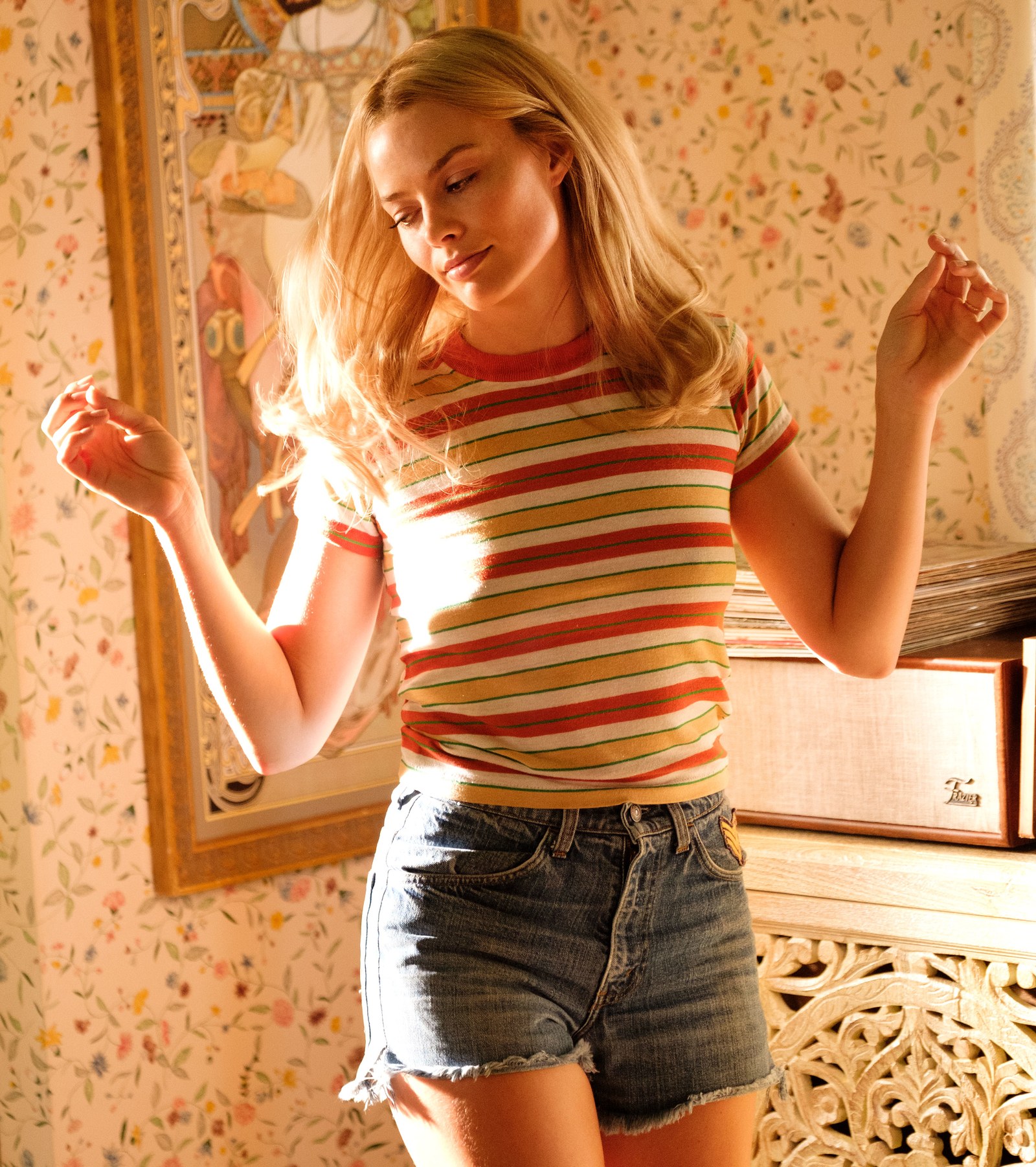All the Beauty Secrets Behind 'Once Upon A Time In Hollywood'

Between classic sports cars and go-go boots, there’s a lot of eye candy in Once Upon A Time In Hollywood. But Quentin Tarantino’s love letter to the L.A. of his youth also perfectly encapsulates an incredibly polarizing time in American history, when the ’50s and its mainstream values started to give way to a youth-lead counterculture.
This tension is embodied, in part, by relative old timer Rick Dalton (Leonardo DiCaprio), an actor who has built a rugged onscreen image, but who is made utterly fragile by the threat of the new guard. He sheds tears over his fading relevance, seems unnerved at the sight of hippies, and is scared to retire his trademark pompadour. Meanwhile, Margot Robbie floats through the film as the fearless Sharon Tate, with confidence and ease to spare. Tate dances like no one’s watching while on Pan Am planes and at the Playboy mansion, picks up hitchhikers and self-advocates for recognition (and a free movie ticket) at a theater playing her film.
“She wasn’t terrified of being a modern woman at all,” says the film’s hair department head, Janine Thompson. The same can be said of the girls of the Manson Family who run Spawn Ranch, who flexed their confidence with a dusted-up look that said they wanted no part of traditional beauty standards. Sure, the film is a buddy movie between Rick and his sidekick, Cliff (Brad Pitt). But it’s also a sharp look at old-school American culture (represented by Dalton and his ilk) being made passé by a new wave of thinkers, dreamers, and fighters (as shown by Tate and the Manson girls). If anything, the film shows the future is female—and much of it is reinforced through beauty looks.
To get in on the hair and makeup secrets behind 1969 Los Angeles’s sun-drenched sea change, Glamour talked with Thompson and the film’s makeup department head, Heba Thorisdottir. Ahead, see how characters’ hairstyle and makeup choices help enunciate the clash between mainstream American culture that felt stuck in the fifties (embodied by Dalton) and a rising counterculture that targets Tate and the Manson family girls as the society’s next influencers.
Sharon Tate’s New-School Beauty
“Sharon was very fashion forward,” says Thorisdottir. “In 1969, because of her pregnancy and because she had spent a lot of time in England, she was moving toward what we think of as new bohemian.” Sure, her hippie-leaning look is a stark contrast to the buttoned-up Old Hollywood stars, but even more, it’s the new technology it required that shows how progressive the actress really was.
